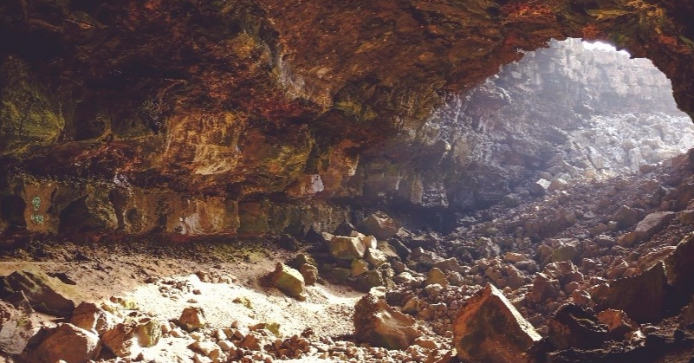
In the EPA, the Department of the Interior, and the Gold King Mine Disaster – Part 3, we continue to look at the government investigations following the massive pollution caused by the mine blowout. As mentioned in Part 2 of this series, the Environmental Protection Agency (EPA) conducted an internal investigation. The Department of the Interior (DOI) was tasked with providing an “independent” outside review of the activities that led to the breach of the mine. And, the Army Corps of Engineers was limited to technical review role.
EPA Investigation – Conflict of Interest
“The EPA selected DOI’s Bureau of Reclamation (BOR) to lead the review despite the latter’s long involvement at the Gold King Mine site and elsewhere across the mine-rich region. Also, DOI’s Bureau of Land Management (BLM) was active in the area and often worked closely with the EPA, and even owns a portion of the Gold King Mine’s lower level.” [1] Yes, you read that correctly: the BLM/DOI was a part owner of the mine. In the legal world, one would generally consider that a fairly significant conflict of interest.
“The Environmental Protection Agency (EPA) – the very agency DOI was investigating for causing the spill – once considered holding [the Department of] Interior liable for pollution, likely for decades of acid waste leaking from Gold King’s lower level. EPA and DOI also frequently collaborated on projects at Gold King Mine and across the region.” [1]
Army Corps of Engineers Review
Enter another government entity: led by DOI, The Army Corps of Engineers was initially tasked with the after-action review of the mine disaster. “DOI will lead with [Army Corps] in support,” read an email dated August 16, 2015 between Army Corps officials. EPA “would like DOI and [Army Corps] leads to meet and develop the scope further.” The correspondence further stated that the EPA wanted “to remove itself from directing the process as soon as possible, so as to retain the independent nature of the study”. [2]
However, the desire for an independent investigation of the EPA was short lived. Within a couple hours, Dana Stalcup at the EPA’s Superfund office informed the Army Corp that the DOI was asking to lead the study and asserting the Corps would only needed as support in peer review. “DOI’s final scope for the Gold King Mine review, in fact, nixed crucial topics Army Corps planned to examine, including the root cause of the spill.” [3]
In light of their downgraded role in the investigation, lead Army Corps reviewer Richard Olsen stated: “My worry is the limited scope and responsibilities for the [Army Corps] review.” Olsen continues, “I had thought the [Army Corps] review effort would have included some overview efforts during the 60 day investigation work as in office progress meetings and a site assessment.” [3] It turns out that Richard Olsen’s skepticism had merit. Gold King Mine reviewers were now being ordered to avoid investigation of EPA negligence.
“It has been our understanding from the beginning that we were being hired to perform a technical evaluation of the causes,” BOR Technical Service Director, Thomas Luebke, replied in an email to Olsen. “Further, we understood that we were asked to stay clear of the investigative efforts that dealt with communications/admin and how/why certain decisions were made, since these separate investigative efforts would be performed by others more suitable to that undertaking,” stated Luebke. [4]
Army Corps of Engineers Refuses to Sign DOI Review Without Criticism
When the Department of Interior “investigation” was finished, Richard Olsen of the Army Corps of Engineers refused to sign the peer review without an important addition: his criticism of the DOI’s failure to assign blame. It appears that very early on in the investigation of the Gold King Mine disaster, the focus shifted from investigating negligence, the plan outlined by EPA Administrator Gina McCarthy to the Natural Resources Committee [5] – to what Secretary of the Department of the Interior, Sally Jewell, later told the Committee that it was simply a review of technical issues. [6]
The fact that no one has been held accountable over two years after the EPA breached the Gold King Mine and caused the blow-out should not come as a surprise. The internal review process was designed to avoid investigation of EPA negligence, and was clouded by conflicts of interests from the very beginning.
In Part 4 of this series we will delve further into EPA’s role in causing the mine disaster, and a geologist’s prediction of the blow-out occurring based on previous mine plugging incidents.
How may we serve you?
Article by: Tami Schmitt
Photo by: Ksenia Kudelkina
1 http://dailycaller.com/2016/06/06/gold-king-mine-report-botched-by-the-mines-federal-part-owner/
2 http://naturalresources.house.gov/uploadedfiles/gold_king_mine_redacted.pdf
5 https://naturalresources.house.gov/uploadedfiles/testimony_mccarthy.pdf
6 https://naturalresources.house.gov/uploadedfiles/jewell_testimony_12_9_15.pdf


